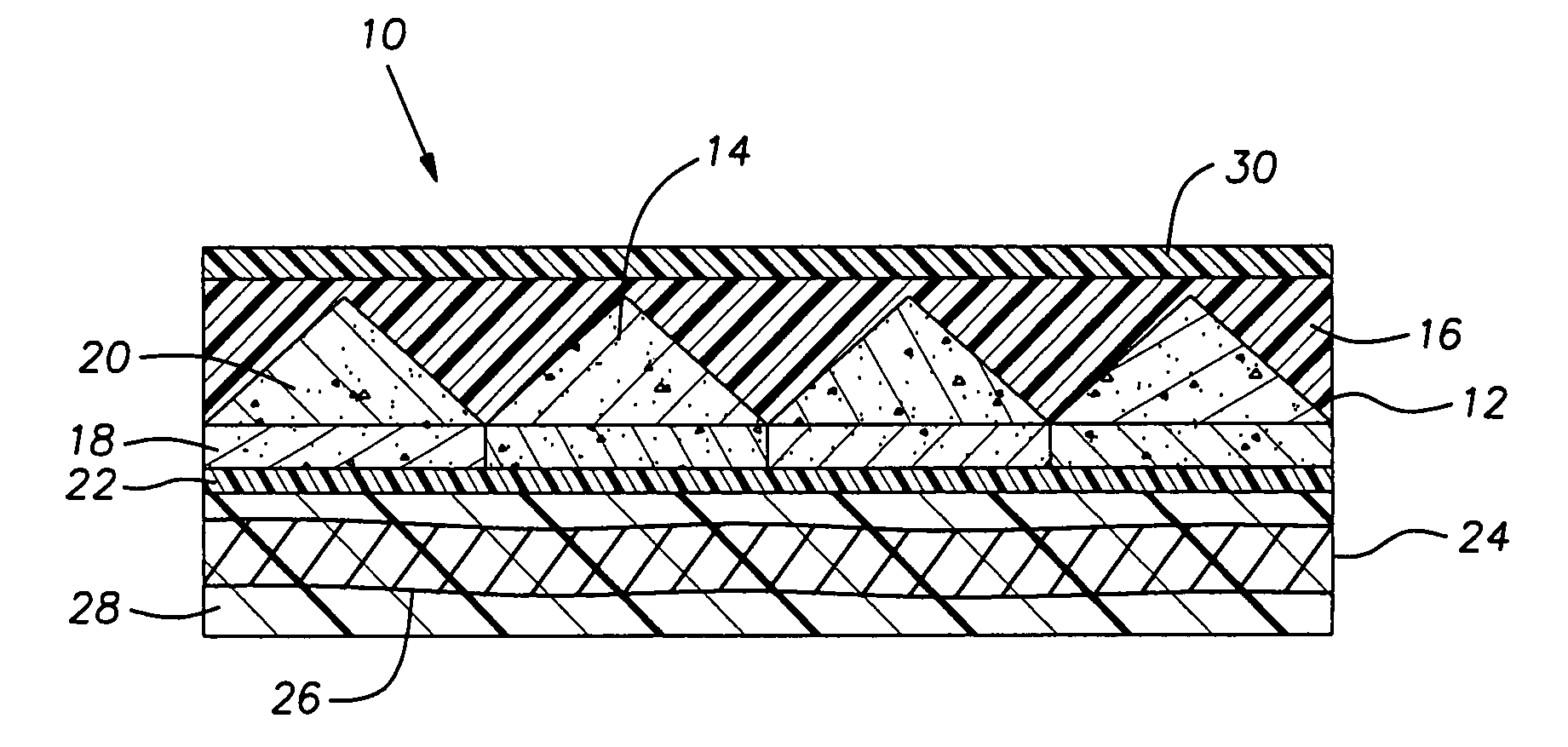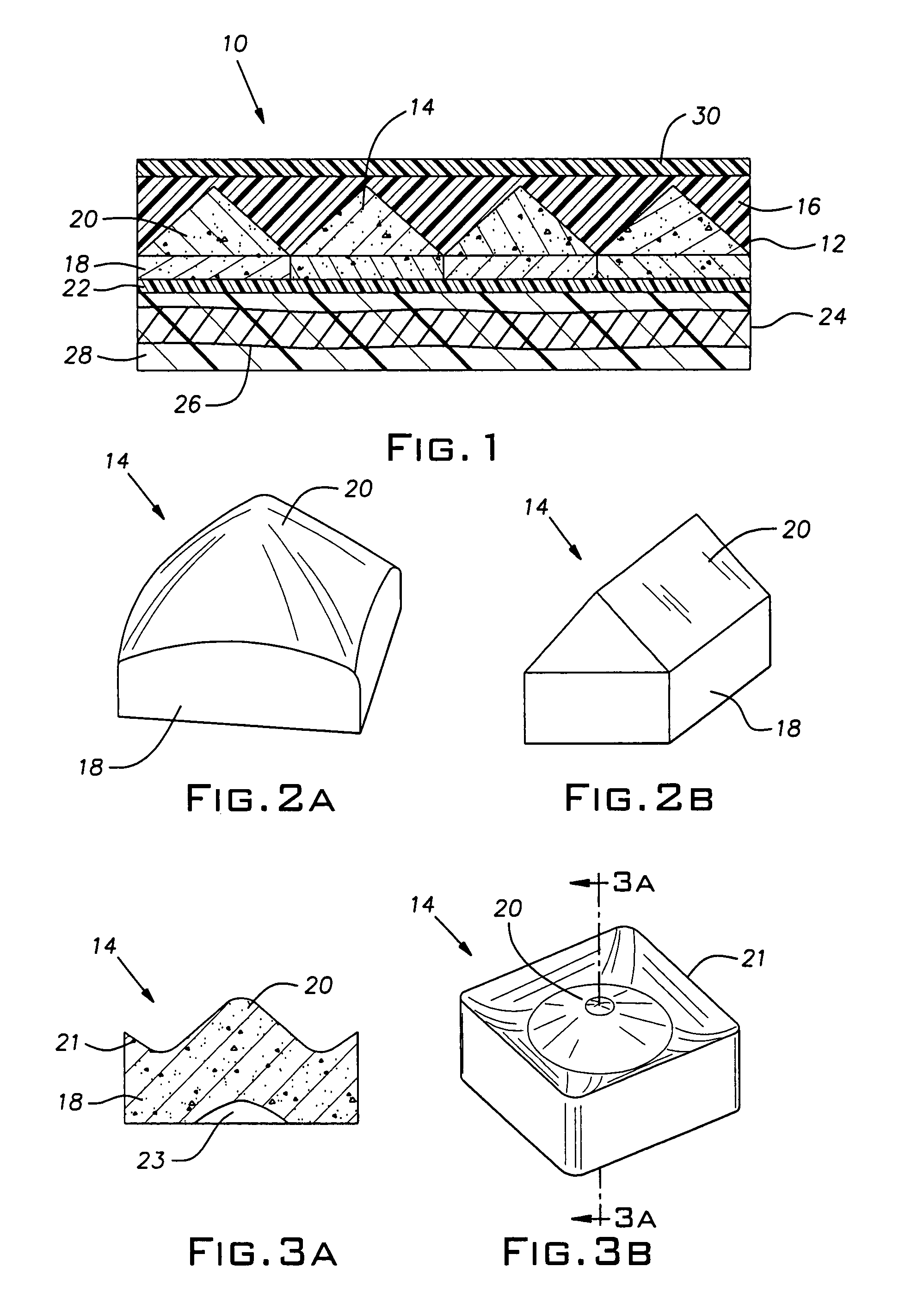Encapsulated ceramic composite armor
a composite armor and ceramic technology, applied in the field of composite armor, can solve the problems of kinking fibers around the penetration cavity, too heavy and expensive for lighter fighting vehicles or transports, and inability to protect vehicle occupants from many common ballistic and blast threats,
- Summary
- Abstract
- Description
- Claims
- Application Information
AI Technical Summary
Benefits of technology
Problems solved by technology
Method used
Image
Examples
example 1
Benchmarking 0.50 Cal APIT
[0098]Penetrating power of the projectile was determined by using rolled homogenous armor (RHA) and aluminum T6061 specimen. In the case of three RHA, 6×6 inch and 0.5 inch thick plates were stacked to produce 1.5 inch thick test piece. The panel was shot three times. The depth of penetration was measured. The depth when converted to areal density corresponded to about 50 lbs / ft2. In the case of aluminum, two cylinders of 3.5 inch and 2 inch thick were joined to produce a 4 inch deep sample. From measured depth of penetration, equivalent areal density for comparison was about 46 lbs / ft2.
Armor Test
[0099]A cone shaped alumina ceramic tile with a square base having length and width of about 50 mm (cone design CD1) and with a hemi-spherical cavity about 12 mm deep and about 34 mm wide having areal density of 14.14 lbs / ft2 were bonded to a fiberglass composite plate (6×6 inch and 0.5 inch thick, 5.2 lbs / ft2). The sample was mounted in an aluminum picture-frame h...
example 2
[0100]A ceramic cone shaped alumina tile with a square base (about 50×50 mm) of cone design CD1 having an areal density of 14.6 lb / ft2 was bonded to a High Hard Armor steel plate (HHA) that was 0.15 inch thick. The ceramic tile had a hemispherical cavity with maximum depth of about 13.8 mm and width of about 35 mm. The tile was placed in a 6×6 inch aluminum frame with 4×4 inch opening. The extra space between the target tile and aluminum frame was filled with ¾ inch alumina balls. Test projectile was 0.50 Cal APIT. The impact location was recorded by using a witness paper before the impact. The hit location was at the mid-point of the cone where ceramic thickness was close to minimum. The velocity measurements showed values of 2684 and 2669 ft / sec. There was no penetration into steel although it showed localized deformation. The total areal density of the armor sample was 20.7 lbs / ft2, a number distinctly less than 50% of the areal density of RHA needed to defeat the equivalent ball...
example 3
[0101]Two flat alumina tiles, 15 and 6 mm thick were bonded to 0.15 inch HHA plate and tested using a procedure described in examples 1 and 2 and the projectile was 0.50 Cal APIT. The total areal density was 22.6 lbs / ft2. The armor did not stop the projectile. The velocity was about 2730 feet / sec.
PUM
| Property | Measurement | Unit |
|---|---|---|
| angle of inclination | aaaaa | aaaaa |
| diameter | aaaaa | aaaaa |
| angle of inclination | aaaaa | aaaaa |
Abstract
Description
Claims
Application Information
 Login to View More
Login to View More - R&D
- Intellectual Property
- Life Sciences
- Materials
- Tech Scout
- Unparalleled Data Quality
- Higher Quality Content
- 60% Fewer Hallucinations
Browse by: Latest US Patents, China's latest patents, Technical Efficacy Thesaurus, Application Domain, Technology Topic, Popular Technical Reports.
© 2025 PatSnap. All rights reserved.Legal|Privacy policy|Modern Slavery Act Transparency Statement|Sitemap|About US| Contact US: help@patsnap.com



